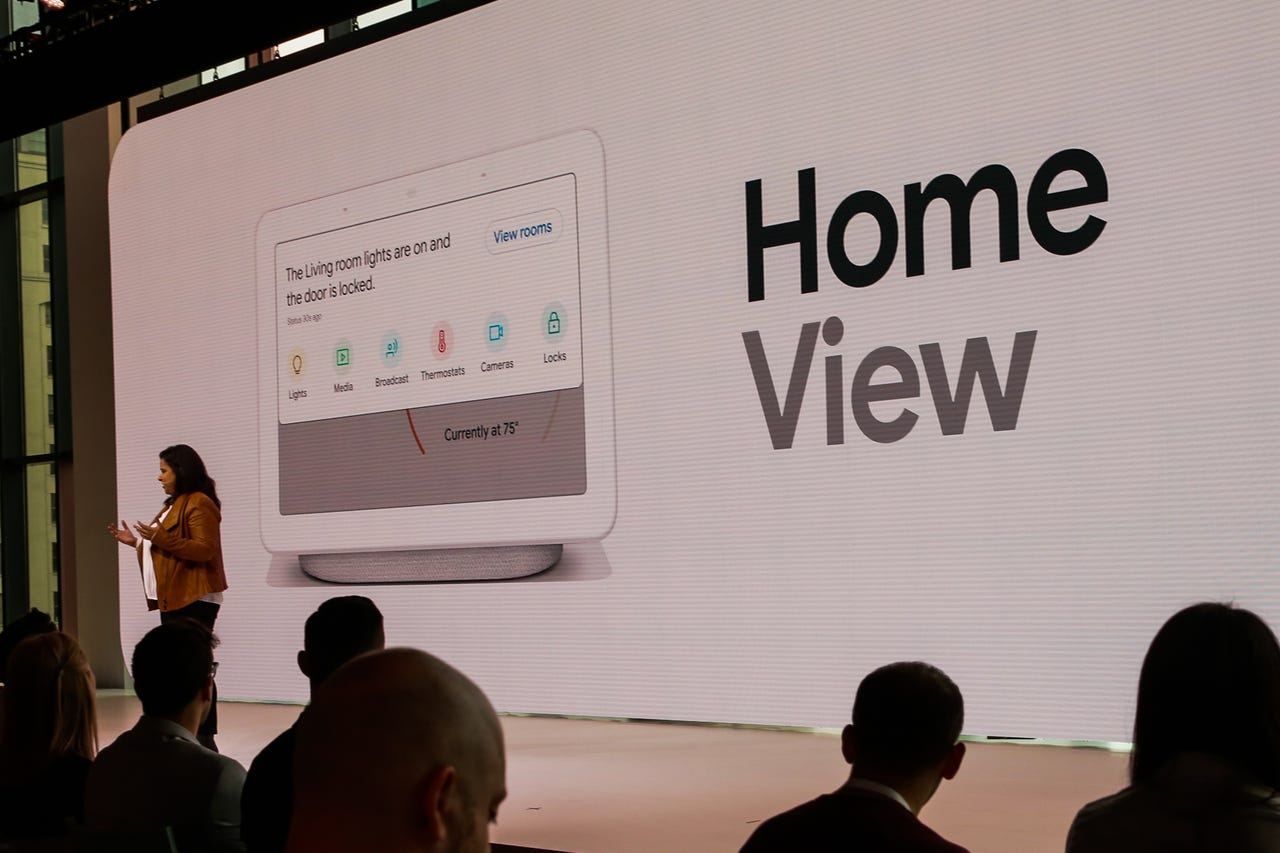Google Pixel 3 event: All the key moments from the show

Software first, hardware later
Rick Osterloh took the stage first: "Good morning, everyone! You're going to hear a lot more about help today." He is essentially going through Google's investment in AI software and related features like Smart Compose in Gmail, real-time translation, etc. "These incredible technologies you'll hear about today are built on this 20-year history of making information more accessible."
It's interesting that Google is starting with software.
AI, Security, and Digital Wellbeing
Osterloh then segwayed into three areas that Google is focused on when it comes to software: Artificial intelligence (via Google Assistant), Security (via Google Play Protect and Titan Security), and Digital Wellbeing (app limits and parental controls).
Introducing: All the new hardware
Osterloh jumped right into new products after talking AI and software.
"We designed the world's best camera and put it in the world's most helpful phone." He said, while introducing the Pixel 3, and then, in quick succession, he announced the Pixel Slate, followed by the Google Home Hub. "For life at work and at play, we're bringing the power and productivity of a desktop to a tablet," he added, "And for life at home: introducing Google Home Hub."
Introducing: Pixel 3
Pixel 3 is officially Google's next Pixel smartphone.
Introducing: Pixel Slate
Pixel Slate is Google's answer to Surface Pro. It's a Chrome OS tablet with a detachable keyboard.
Introducing: Home Hub
And Google Home Hub is Google's version of the Echo Show. It's a display-quipped Echo.
Home Hub: A new Google Assistant device
Google chose to drill-down on the Home Hub's features first. This is a new Google Assistant device that provides the ability to see responses from Assistant, instead of just hearing them. Google has refreshed services like Search, YouTube, Maps, Calendar, and Photos for Home Hub, so that you can use voice controls and view glanceable information.

Home Hub: Features
There doesn't seem to be a camera on Home Hub, so this isn't a video chat device like the Echo Show or Facebook Portal. However, it does have a feature called Home View, described as a one-stop dashboard for controlling all your smart home devices.
But when you're not using the Hub directly, it can double as a Google Photos photo frame. Google also showed off a new step-by-step recipe feature and a "huge library of recipes". The company also said Home Hub has YouTube support, so you can watch videos, and it has Voice Match support, so it'll recognize different users' voices and pull up their profiles.
Home Hub: Pricing and availability
The Home Hub comes in four colors: Green, pink, dark grey, and white. It includes six months of free YouTube Premium service. It'll be available from Oct. 11 for $149 in the US, UK, and Australia. Preorders start Oct. 9.
Pixel Slate: A detachable Chrome OS tablet
The next new product Google spent time demoing is the Pixel Slate, a Pixel-branded, Chrome OS-powered tablet that doubles a laptop, though Trond Wuellner, Google's director of product management, said it is "not a laptop trying to be a tablet."
Pixel Slate: Features
Pixel Slate features a 293ppi LCD display, a fingerprint scanner, front-firing stereo speakers, integrated Google Assistant, Titan security, Family Link control, a free three-month trial of YouTube TV, and up to 10 hours of battery life. It further supports the $99 Pixelbook Pen stylus, which debuted at Google's hardware event last autumn.
Pixel Slate: It has cameras too!
It also comes with 8-megapixel rear- and front-facing cameras with Portrait mode.
Pixel Slate: Works with a backlit keyboard
Pixel Slate can work with a new Pixel Slate Keyboard that has rounded, backlit keys. It connects magnetically and features a kickstand. But the best part is there's no charging needed.
Pixel Slate: Pricing and availability
Pixel Slate will go on sale from November at $599, while the keyboard is $199 separately.
Pixel 3: Saving the best for (nearly) last
Toward the end of the show, Google finally brought out the star of the event: Pixel 3 and Pixel 3 XL. These are the company's latest flagship Android smartphones.
The Pixel 3 XL has a 6.3-inch display (up from six inches on the Pixel 2 XL), while the Pixel 3 has a 5.5-inch screen (up from five inches on the Pixel 2).
Other key specs include a Snapdragon 845, 4GB RAM (or more), Bluetooth 5.0, front-facing stereo speakers, and a new Titan M security chip, which Google said offers "on-device protection for login credentials, disk encryption, app data, and the integrity of the operating system."
Pixel 3: Top Shot and other camera features
Both new Pixel phones come with software features that enhance the new camera performance with AI tricks. A new Top Shot feature, for instance, will select the best image from a burst series of shots and ditch the pictures that are blurry. And a new tool called Super Res Zoom uses multiple frames and AI to provide a sharper final image -- even without optical zoom.
Pixel 3: Runs Android Pie, comes with Photos unlimited storage
The latest Pixel phones ship with Android 9 Pie, Google's digital wellness features out of the box, and unlimited Google Photos storage.
Pixel 3: Call Screen
There's one unique trick feature this year: The Pixel 3 phones will allow Google Assistant to weed out spam calls and let you block a caller or get a reminder to call back later. The phone answers itself and can provide a real-time transcription of the spam call. This feature, called Call Screen, will also come to the older Pixel models.
Pixel 3: Pricing and availability
The Pixel 3 starts at $799 for 64GB, and the Pixel 3 XL starts at $899. For $100 more, you can get the 128GB storage option. Preorders for both phones begin Oct. 9. You will get six months of free YouTube Music service when you order. The Pixel 3 phones will officially launch on Oct. 18.
Verizon Wireless will remain the exclusive carrier in the US.
Pixel Stand: Last, but not least
If you noticed that in the last slide there was a Google Pixel Stand featured, it's because Google announced it as a wireless charging dock for your bedside.
It's a dock that uses USB-C and supports fast charging. It can charge Qi-compatible devices, such as the new Pixel 3 and Pixel 3 XL, and will even switch the phone into Do Not Disturb mode when it's docked. It also syncs up with Google Assistant and has a Portrait mode feature that will let you cycle through your Google Photos albums, So, it doubles as a live photo frame. It also works with Nest Hello and can display your security camera footage.
It'll cost $79 when it launches Nov. 1